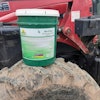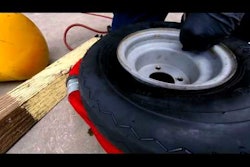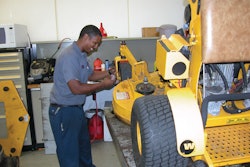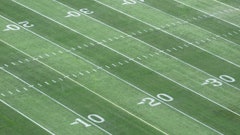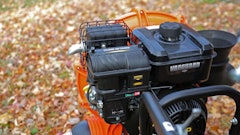
Several factors contribute to the appearance of freshly mowed turfgrasses. A sharp cutting blade and proper cutting height are the more obvious. You also have to consider overall deck construction; not all decks are created equal and each manufacturer puts its own spin on it.
One often overlooked culprit, though, is tire pressure. Unless flat or completely non-functional, some contractors tend to forget about the mower's tires. That's unfortunate, because low tire pressure can affect steering, make the mower wobble, and cause the cutting deck to sit unevenly—resulting in grass clumping and an uneven cut.
Read next: TARYL'S TECH TIPS: Lawnmower Quality of Cut
When checking tire pressure, ensure that the mower is parked on a level surface such as a sidewalk or shop floor. If the mower was recently in use, allow the engine to completely cool; tires warm up when the mower is in use and should be inflated when cool.
The maximum air pressure is displayed as PSI or pounds per square inch. This specification denotes the maximum pressure recommendation for the best performance and can be found on the sidewall of your tire. Tires are manufactured to operate between a certain range of air pressures. It is important not to over-inflate as tire failure can occur.
Other tire quality issues to watch for
While low tire pressure can have a direct correlation with butchered turf, other issues with lawnmower tires can cause additional problems. If your tires are showing any of the following signs, consider replacement.
Dry Rot. Dry rot can be a serious issue, especially if using riding lawn mowers and lawn tractors because of increased chances of a tire blowout. Check for dry rot by inspecting the tire’s sidewall and the lowest part of the tread surface. If you see cracks forming, it’s time to replace the tire.
Worn Tread. A general rule of thumb is inserting an upside down penny into the tire’s groove. If you can see all of Lincoln’s head, you have less than 2/32-inch of tread remaining and it’s time to replace the tire.
Losing Air Pressure. Like any tires, it's common for lawnmower tires to slowly leak a small amount of air throughout the year. That's due to the shrinking of materials as a result of fluctuating temperatures that make the tire seal less effective. However, if tires are rapidly losing a large amount of air and there is no issue with the seal, they are damaged and will need to be replaced.
Make sure that your lawnmower’s tires are in tip-top shape for the upcoming spring months to ensure the best-quality cut possible. For replacement lawnmower tires and more information on tire maintenance and other lawn care equipment, visit Lawnmowertirestore.com.

